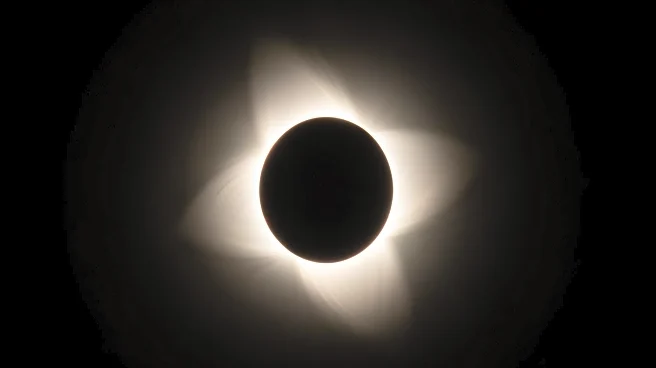What's Happening?
On November 5, 2025, the biggest full moon of the year, known as a supermoon, will occur. This astronomical event will see the moon at its closest point to Earth, known as perigee, at a distance of 221,726
miles. The moon will officially turn full at 8:19 a.m. ET, and it will appear up to 14% larger and 30% brighter than usual. This proximity will result in a significant range of high and low ocean tides, potentially exacerbating coastal flooding if storms coincide with high tide. The phenomenon is known as a perigean spring tide, which occurs when the moon is either at full or new phase, aligning with the sun to amplify tidal effects.
Why It's Important?
The supermoon event is significant due to its potential impact on coastal areas. The increased tidal range could lead to flooding in regions prone to such events, especially if adverse weather conditions occur simultaneously. This highlights the importance of monitoring weather forecasts and preparing for possible flooding in vulnerable coastal communities. Additionally, the event draws attention to the natural cycles of the moon and their effects on Earth, offering educational opportunities for those interested in astronomy and environmental science.
What's Next?
Coastal communities may need to prepare for potential flooding and other impacts associated with the supermoon. Local governments and emergency services might issue warnings or advisories to residents in affected areas. Additionally, the event could spark interest in astronomical phenomena, leading to increased public engagement with science and environmental awareness.
Beyond the Headlines
The supermoon phenomenon underscores the interconnectedness of celestial events and terrestrial impacts. It serves as a reminder of the delicate balance between natural occurrences and human preparedness. The event may also inspire discussions on climate change and its effects on sea levels and coastal resilience.













